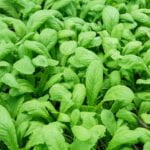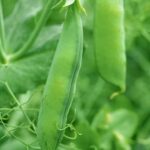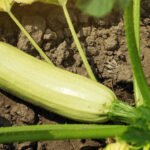Texas Hill Country gardening is a unique and rewarding experience for both novice and experienced gardeners. With its diverse climate and rich soil, Texas Hill Country offers an ideal environment for growing a wide variety of vegetables. Whether you are looking to start your own backyard garden or expand your existing one, there are numerous considerations and techniques to master in order to achieve maximum success.
The Texas Hill Country region is known for its beautiful landscapes, abundant wildlife, and rich agricultural heritage. The combination of mild winters, hot summers, and well-drained soils creates the perfect conditions for cultivating a wide range of vegetables. From tomatoes and peppers to squash and okra, this region provides ample opportunities for gardeners to grow their favorite produce.
In this article, we will explore the best vegetables to grow in Texas Hill Country, as well as essential tips for starting and maintaining a successful vegetable garden in this unique environment. Additionally, we will delve into important considerations such as climate, soil types, pest management, watering techniques, harvesting methods, and community resources available to Texas Hill Country gardeners.
Whether you are a seasoned gardener or just beginning your gardening journey, this comprehensive guide will provide valuable insights and resources for cultivating a bountiful vegetable garden in the Texas Hill Country.
Best Vegetables to Grow in Texas Hill Country
When it comes to gardening in the Texas Hill Country, choosing the right vegetables to grow is essential for a successful harvest. The region’s unique climate and soil conditions require careful consideration when selecting which crops to plant. Here are some of the best vegetables to grow in Texas Hill Country gardening.
Tomatoes
Tomatoes are a popular choice for Texas Hill Country gardeners due to their versatility and ability to thrive in the region’s warm climate. Varieties such as cherry, roma, and beefsteak tomatoes are well-suited for the area and can be grown successfully with proper care and maintenance.
Peppers
Bell peppers, jalapeños, and other hot pepper varieties are excellent options for Texas Hill Country vegetable gardens. These heat-loving plants can withstand the region’s hot summers and produce bountiful harvests if provided with adequate sunlight, water, and well-draining soil.
Squash
Summer squash, zucchini, and other types of squash are well-adapted to the Texas Hill Country climate. These fast-growing vegetables thrive in warm temperatures and can be easily integrated into garden beds or containers.
Other suitable vegetables for Texas Hill Country gardening include cucumbers, okra, green beans, and onions. By selecting the right crops that align with the region’s conditions, gardeners can enjoy a productive and flourishing vegetable garden in the Texas Hill Country.
Climate and Soil Considerations for Texas Hill Country Gardening
The climate and soil in the Texas Hill Country can pose unique challenges for gardeners, but with the right knowledge and techniques, it is possible to have a successful vegetable garden. Understanding the specific climate and soil considerations for this region is essential for producing healthy and abundant crops.
Climate Considerations
The Texas Hill Country experiences hot, dry summers and mild winters with occasional freezes. This type of climate can impact the types of vegetables that thrive in the region. It’s important to select vegetable varieties that are well-suited for the warm temperatures and limited water availability. Some heat-tolerant vegetables that do well in Texas Hill Country gardening include okra, peppers, tomatoes, and squash.
Soil Considerations
The soil in the Texas Hill Country is often rocky and alkaline, which can present challenges for gardeners. Before planting a vegetable garden, it’s crucial to amend the soil with organic matter such as compost or aged manure to improve its texture and fertility. Additionally, testing the soil pH can help determine if any amendments are needed to create optimal growing conditions for vegetables.
Tips for Success
To overcome the climate and soil challenges of Texas Hill Country gardening vegetables, consider implementing water-saving techniques such as mulching to retain moisture, selecting drought-resistant vegetable varieties, and using raised beds or containers with well-draining soil. By taking these factors into account and making adjustments accordingly, gardeners in the Texas Hill Country can cultivate a productive vegetable garden despite the region’s unique climate and soil conditions.
Tips for Starting a Successful Vegetable Garden in Texas Hill Country
When starting a vegetable garden in the Texas Hill Country, it is important to consider the unique climate and soil conditions of the region. The first step in starting a successful garden is to choose the right location.
Look for an area that receives at least 6-8 hours of sunlight per day and has well-draining soil. Raised beds can also be a great option for Texas Hill Country gardening, as they provide better control over soil quality and moisture levels.
Another important consideration for Texas Hill Country gardening vegetables is selecting the right vegetables to grow. Some vegetables that thrive in this region include tomatoes, peppers, squash, okra, beans, and various leafy greens like spinach and kale. These vegetables are well-suited to the warm summers and mild winters of the Texas Hill Country, making them a great choice for gardeners in the area.
In addition, it is essential to carefully plan and prepare the soil before planting. Conduct a soil test to determine its pH levels and nutrient content, and then amend the soil as needed to create optimal growing conditions for your chosen vegetables. Adding organic matter such as compost or aged manure can help improve soil structure and fertility. By taking these steps, you can increase your chances of success when starting a vegetable garden in the Texas Hill Country.
Pest and Disease Management for Texas Hill Country Gardening
When it comes to maintaining a successful vegetable garden in the Texas Hill Country, managing pests and diseases is essential. The hot and humid climate of the region can attract various insects and diseases that can potentially harm your vegetable plants. However, there are several effective strategies you can implement to prevent and manage these issues.
One of the first steps in pest and disease management for Texas Hill Country gardening is to choose disease-resistant vegetable varieties. Look for seeds or seedlings that are labeled as resistant to common diseases in the area, such as powdery mildew or root rot. Additionally, rotating your crops each year can help reduce the buildup of soil-borne diseases, as well as implementing proper spacing between plants to improve air circulation and reduce the risk of fungal infections.
Furthermore, practicing good garden hygiene is crucial in preventing infestations and disease outbreaks. Regularly inspect your plants for any signs of pest damage or disease symptoms, such as yellowing leaves or unusual spots. Remove any infected or infested plants immediately to prevent the spread of diseases to other healthy plants. Consider using barriers such as row covers or netting to protect your plants from common pests like caterpillars or aphids.
In addition to preventative measures, there are also natural and organic remedies that can be used to manage pests and diseases in Texas Hill Country vegetable gardens. These include options such as neem oil spray for controlling insect pests, diatomaceous earth for deterring crawling insects, and companion planting with beneficial flowers and herbs to attract beneficial insects that prey on garden pests.
- Choose disease-resistant vegetable varieties
- Rotate crops annually
- Practice good garden hygiene
- Use natural and organic remedies
With careful attention and proactive management strategies, you can effectively prevent and address potential pest and disease issues in your Texas Hill Country vegetable garden.
Watering and Irrigation Techniques for Texas Hill Country Vegetable Gardens
When it comes to gardening in the Texas Hill Country, proper watering and irrigation techniques are crucial for the success of your vegetable garden. The region’s hot and dry climate can pose challenges for gardeners, but with the right approach, you can ensure that your crops thrive.
One effective technique for watering vegetables in the Texas Hill Country is drip irrigation. This method delivers water directly to the base of plants, minimizing evaporation and ensuring that moisture reaches the root zone where it is needed most. Drip irrigation also helps prevent common issues such as fungal diseases that can result from overhead watering.
Another important consideration for watering Texas Hill Country vegetable gardens is timing. The best time to water your plants is in the early morning or late afternoon to avoid excessive evaporation. Additionally, it’s essential to monitor soil moisture levels regularly and adjust your watering schedule according to weather conditions.
It’s also worth considering water conservation strategies when planning your irrigation system for a Texas Hill Country vegetable garden. Collecting rainwater in barrels or using greywater from household sources can supplement your garden’s water supply, reducing reliance on traditional sources during dry periods.
| Technique | Benefits |
|---|---|
| Drip Irrigation | Minimizes evaporation and prevents fungal diseases |
| Timing | Early morning or late afternoon watering reduces evaporation |
| Water Conservation | Rainwater collection and greywater use reduce reliance on traditional water sources |
Harvesting and Preserving Vegetables in Texas Hill Country
Once you have successfully grown a variety of vegetables in your Texas Hill Country garden, it’s time to start thinking about harvesting and preserving your bountiful produce. Here are some tips and techniques for getting the most out of your vegetable harvest:
- Harvesting: When it comes to harvesting vegetables in Texas Hill Country, timing is key. Different vegetables have different indicators for when they are ready to be harvested. For example, tomatoes should be picked when they are fully colored and slightly soft to the touch, while lettuce should be harvested before it bolts and becomes bitter. Be sure to do some research on each vegetable you are growing to know the best time for harvesting.
- Preserving: Once you have harvested your vegetables, it’s important to preserve them properly to ensure that you can enjoy them for as long as possible. One popular method of preserving vegetables is canning, which involves processing the vegetables in glass jars at high temperatures to kill bacteria and other microorganisms. Another common preservation method is freezing, which involves blanching the vegetables briefly in boiling water before freezing them.
- Storage: Proper storage is also crucial for preserving the quality of your harvested vegetables. Some vegetables, like carrots and potatoes, can be stored in a cool, dark place with good ventilation. Others, like leafy greens and herbs, should be stored in the refrigerator or even frozen for longer shelf life.
By following these harvesting and preserving techniques, you can make the most out of your Texas Hill Country gardening experience and enjoy your homegrown vegetables throughout the year.
Remember that successful gardening depends on knowing which plants will grow well in your area – so get advice from local growers before making any decisions.
Community Resources and Events for Texas Hill Country Gardeners
In conclusion, Texas Hill Country gardening offers a unique and rewarding experience for vegetable growers. With the right knowledge and techniques, gardeners in this region can enjoy a bountiful harvest of fresh, delicious produce.
By carefully considering the climate and soil conditions, choosing the best vegetables to grow, and utilizing proper pest and disease management, gardeners can set themselves up for success. Additionally, taking advantage of community resources and events can provide valuable support and information for Texas Hill Country gardeners.
One of the key aspects of successful Texas Hill Country gardening is understanding the climate and soil considerations specific to the region. With its hot summers and mild winters, as well as rocky limestone soils, it’s important for gardeners to select vegetables that are well-suited for these conditions. By choosing heat-tolerant varieties and amending the soil as needed, gardeners can optimize their chances of a successful harvest.
Watering and irrigation techniques also play a crucial role in Texas Hill Country vegetable gardens. The region’s limited water supply means that efficient watering methods are essential for maintaining healthy plants. Utilizing techniques such as drip irrigation or rainwater harvesting can help conserve water while ensuring that vegetables receive adequate moisture.
Community resources and events offer invaluable opportunities for Texas Hill Country gardeners to connect with fellow enthusiasts, learn from experienced growers, and access helpful information. Whether it’s joining a local gardening club, attending workshops or seminars, or visiting farmers’ markets, these resources can provide inspiration, support, and knowledge-sharing within the gardening community.
In summary, by applying the tips outlined in this article along with utilizing community resources available to them, Texas Hill Country gardeners can enhance their vegetable-growing endeavors. With dedication and attention to the specific needs of this region’s climate and soil, they can enjoy an abundant harvest of fresh produce from their own gardens.
Frequently Asked Questions
What Vegetables Grow Best in Texas?
Texas’s climate and soil make it ideal for growing vegetables like tomatoes, peppers, okra, sweet potatoes, and various types of squash. These vegetables thrive in the hot and dry conditions often found in Texas.
What Vegetables Grow Best on a Hill?
Vegetables that grow best on a hill are those that require good drainage to prevent waterlogging. This includes vegetables like carrots, radishes, onions, and lettuce. Additionally, hillside gardens can provide better air circulation which is beneficial for preventing diseases.
When Should I Start a Vegetable Garden in Texas?
In Texas, the best time to start a vegetable garden is in late winter or early spring. This allows for the soil to warm up and prepare for planting season. However, specific timing may vary depending on the region within Texas, so consulting with local experts or agricultural extension offices is recommended for more precise timing.

If you’re looking to get into vegetable gardening, or are just looking for some tips on how to make your current garden better, then you’ve come to the right place! My name is Ethel and I have been gardening for years. In this blog, I’m going to share with you some of my best tips on how to create a successful vegetable garden.





